Did you know that drug overdoses increased nearly 30% in the past year? The United States soared above 100,000 drug-related deaths, and fentanyl is one of the biggest culprits.
Medication-assisted treatments effectively reduce opioid use, cravings, and potential overdoses. They can manage withdrawal symptoms, making it easier for you to wean off safely. Have you wondered what the difference is between Suboxone vs. methadone?
Luckily, we have you covered with a complete guide on both medications, how they fare in studies, and where you can find a clinic near you. Keep reading for more information!
What Is Suboxone?
Suboxone is the brand-name medication for naloxone. You might also hear it called buprenorphine because it contains both active ingredients.
Its primary use is treating opiate addictions and comes in a film that dissolves in the mouth. There are four main prescription strengths of buprenorphine:
- 2 mg
- 4 mg
- 8 mg
- 12 mg
Naloxone starts at 0.5 mg and increases to 4 mg. Studies found that Suboxone works best for long-term use of at least 24 weeks. There are some side effects with Suboxone, such as:
- Headache
- Body aches
- Abdominal cramping
- Insomnia
- Depression
- Nausea
- Constipation
Typically, these side effects should start residing after a couple of days to weeks. Other serious side effects like allergic reactions and breathing problems require immediate medical attention.
When using Suboxone, most experts suggest placing it by your cheek. If used under the tongue, it releases higher concentrations of naloxone and increases the chances of withdrawals.
What Is Methadone?
Methadone closely resembles OxyContin and heroin, making it easier for patients to withdraw from harmful opiates. Its main goal is to relieve withdrawal symptoms. Methadone reacts slowly to opioid receptors in the brain, resulting in a different reaction than typical opiate abuse.
For example, oxycodone has a half life of three to five hours. In comparison, methadone has a half life of eight to 60 hours. Yet, there is still a risk that some withdrawal symptoms may appear with methadone use.
The safest way to take this drug is to find the right dosage. Different reactions can occur if you suddenly stop taking methadone or combine it with other medications.
Suboxone vs. Methadone
Suboxone is a brand-name drug, while methadone is the generic version, which might affect overall costs. Brand-name prescriptions are notoriously higher in price than generic, but you could always opt for a generic version of Suboxone.
Methadone has less flexibility than Suboxone, but it works at a lower dosage.
Both are controlled substances, but methadone is a Schedule II drug while Suboxone is a Schedule III drug. The difference between classifications is Schedule II has a higher abuse potential than Schedule III. Abuse can lead to physical or psychological dependence on the drug.
Some other examples of Schedule II drugs are fentanyl and OxyContin. Schedule III drugs have a relatively low to moderate abuse potential.
Both medications come with a risk for side effects and withdrawal symptoms. You should always talk to your doctor first about other medications you are on in case of a drug interaction.
What Do The Studies Show?
Methadone has been around longer than Suboxone. Studies show it has proven effective with over 30% reduction in positive opioid drug tests, and patients were over four times more likely to remain in rehab.
In addition to cutting down opioid use, it also reduces infectious disease and coma risks. Suboxone has higher remission rates when used in the short term but shows good long-term success. Since it is a partial agonist and you don’t need a physician’s supervision to start it, many people have opted for Suboxone instead.
It is less structured and regulated, making it easier for many patients to get. Suboxone showed a 14% reduction in positive opioid drug tests, and patients were almost two times more likely to remain in treatment. Suboxone requires a higher dosage than methadone (closer to 16 mg) for optimal effectiveness.
Why Are Medications Used?
When comparing opiate addiction and methadone vs. Suboxone, you might wonder why medications are used for these addictions. Both these medications work towards abstinence. People who suddenly stop opioid use show high relapse rates, putting their health in danger.
Methadone is an opioid agonist. It targets the same brain receptors that opioids do.
Yet, it works slightly differently, taking longer to activate receptors and eliminating the euphoric high. Withdrawals and cravings are dangerous when stopping opioid use.
Methadone can curb cravings and safely manage withdrawal symptoms. Suboxone is similar to methadone but is a partial opioid agonist that also binds to receptors. It does not produce a ‘high’ and is considered less addictive.
Medication-assisted treatment is a critical component of addiction management and inpatient rehab and therapy.
Studies found that when patients had prescriptions for methadone or Suboxone, it reduced heroin use by over 30% across five years. It also had a 20% reduction in all other opioid abuse.
Researchers also looked at six different treatment options for opioid use disorder. The only treatment with consistent effectiveness was medication-assisted therapy with Suboxone or methadone.
To put it simply – medication-assisted treatment remains in place because of its proven success.
Finding Help With Opiate Addictions
Suboxone vs. methadone is a constant debate in the opiate addiction world, but both have their benefits. Methadone could be cheaper and more effective for some people, but it does pose a risk for withdrawal symptoms.
Suboxone is another effective medication with less addictive traits with the correct dosing. It is also more easily accessible. Ultimately, finding a suitable facility with skilled addiction experts can make all the difference in long-term success.
If you are trying to find Suboxone clinics and physicians near you, we have you covered! Check out our website to learn more about addiction recovery.


